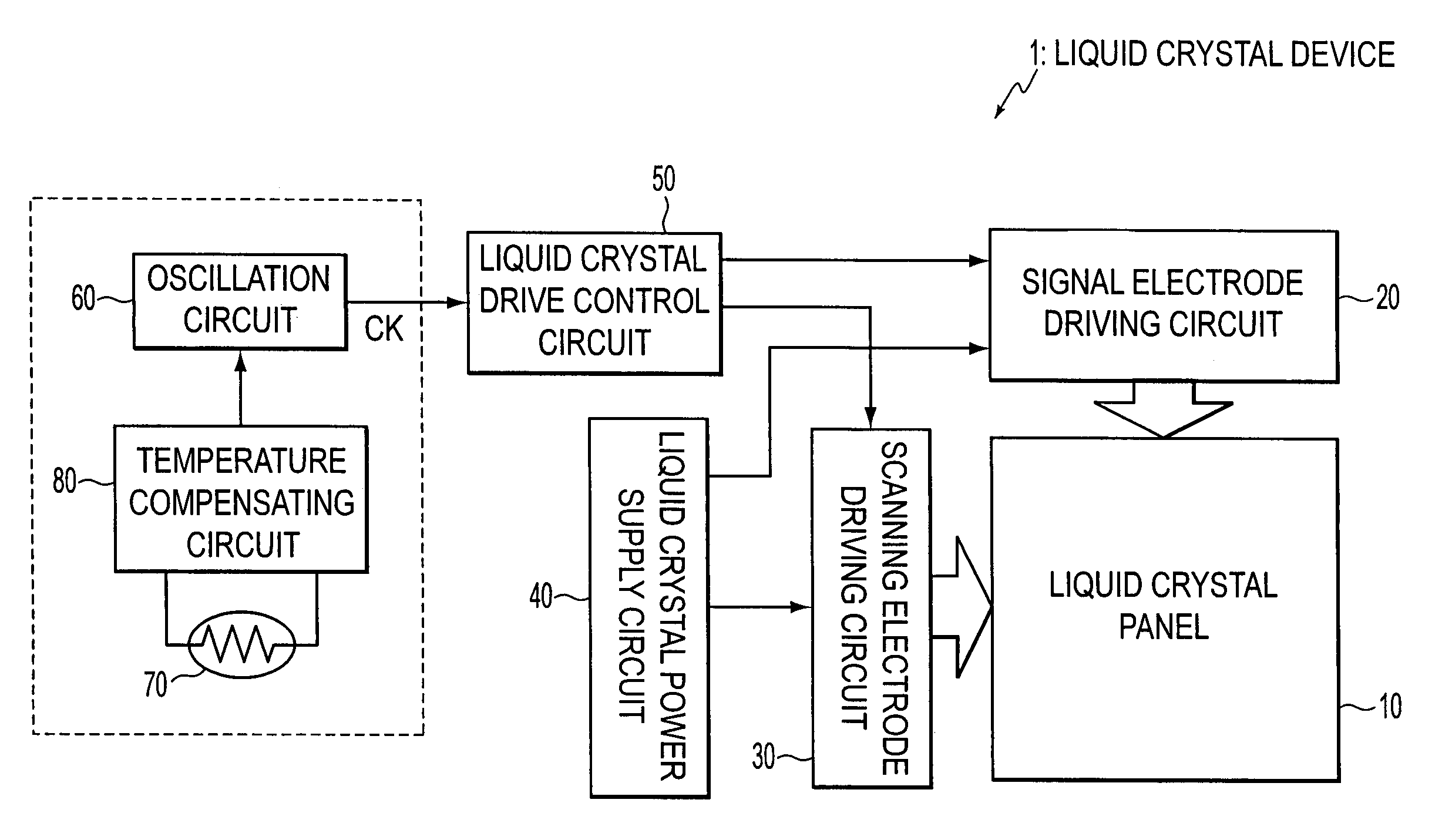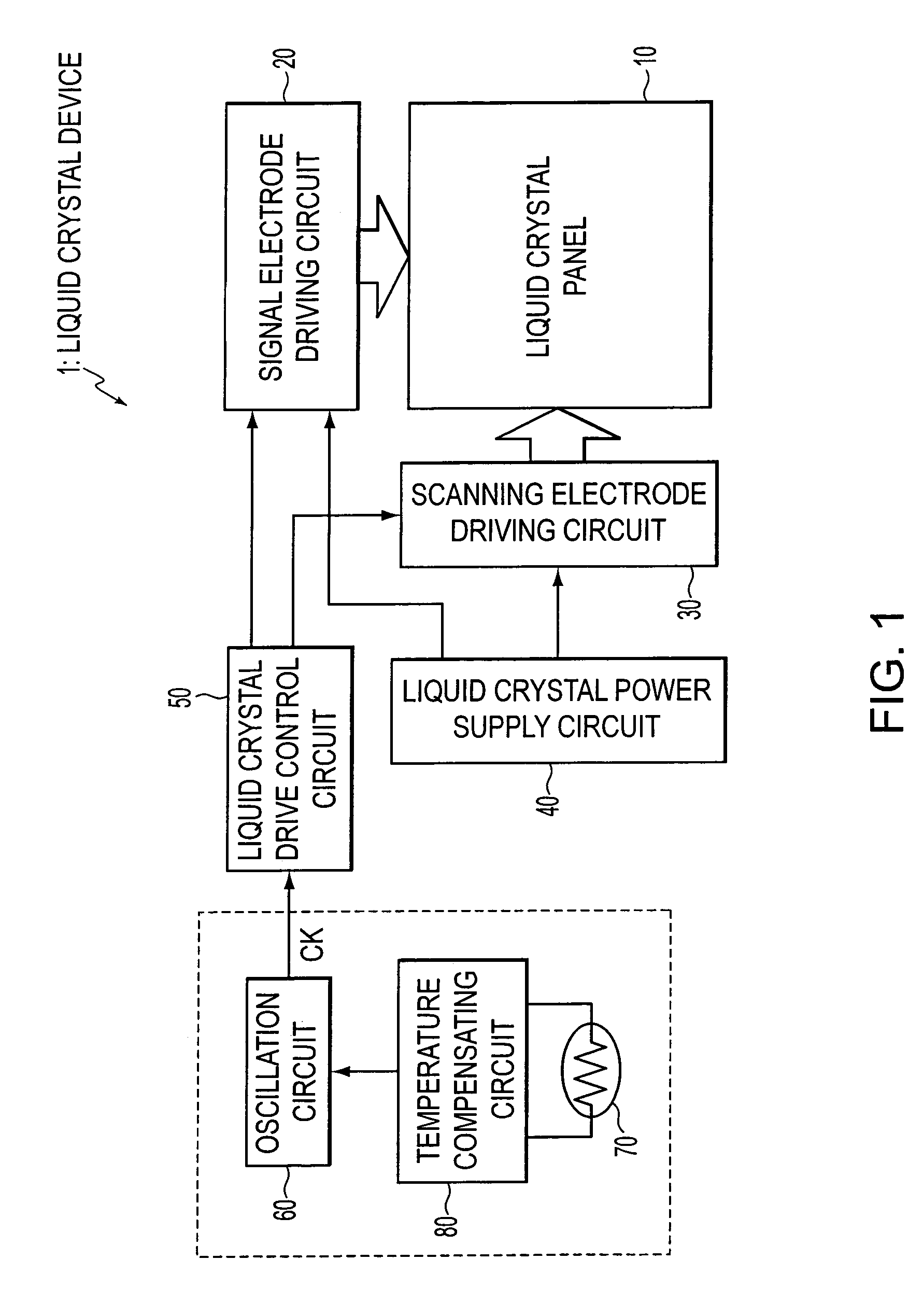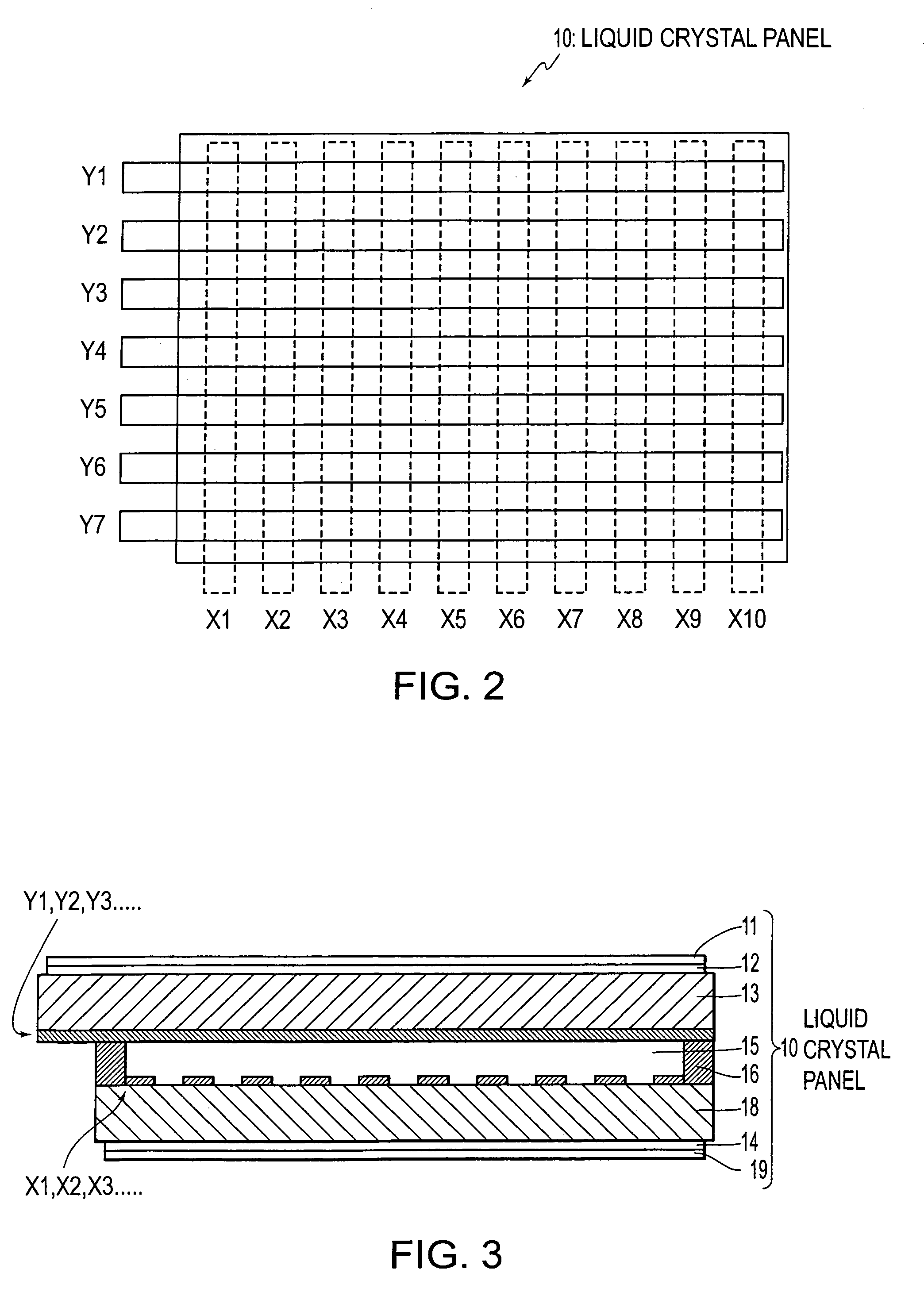Liquid crystal panel driving method, liquid crystal device, and electronic apparatus
a technology of liquid crystal devices and driving methods, applied in the direction of instruments, computing, electric digital data processing, etc., can solve problems such as image degradation, and achieve the effects of preventing image degradation, high-quality image, and preventing flicker
- Summary
- Abstract
- Description
- Claims
- Application Information
AI Technical Summary
Benefits of technology
Problems solved by technology
Method used
Image
Examples
exemplary embodiment 1
[0055](Overall structure)
[0056]FIG. 1 is a block diagram of the schematic structure of a liquid crystal device according to a first exemplary embodiment of the present invention. FIGS. 2 and 3 are a plan view and a sectional view, respectively, of a liquid crystal panel 10 used in the liquid crystal device. FIG. 4 is an equivalent circuit diagram of the liquid crystal panel 10. FIG. 5 includes waveform charts of driving signals used for the liquid crystal device.
[0057]As shown in FIG. 1, a simple matrix liquid crystal device 1 of this exemplary embodiment includes the liquid crystal panel 10, driving circuits (a signal electrode driving circuit 20 and a scanning electrode driving circuit 30) for driving the liquid crystal panel 10, a liquid crystal power supply circuit 40 for supplying various DC power (potentials V1, V2, V3, . . . shown in FIG. 5) to the driving circuits 20 and 30, and a liquid crystal drive control circuit 50 for controlling the driving circuits 20 and 30 and caus...
exemplary embodiment 2
[0083]FIG. 11 is a block diagram of the structure of a temperature-compensated oscillator for outputting a reference clock signal to a liquid crystal drive control circuit 50 included in the structure of a liquid crystal device of another exemplary embodiment. According to this exemplary embodiment and the following exemplary embodiments, the basic structures of a liquid crystal device 1 and a liquid crystal panel 10 are the same as those described in the first exemplary embodiment with reference to FIGS. 1 to 5. The same reference numerals are given to corresponding components, and repeated descriptions of the common portions are omitted. The characteristics of the liquid crystals used for the liquid crystal device are the same as those described with reference to FIGS. 8 to 10B, and descriptions thereof are omitted.
[0084]According to the embodiment, as shown in FIG. 11, a low frequency signal is used as a driving signal at a low temperature and a high frequency signal is used at a...
exemplary embodiment 3
[0097]FIG. 13 is a block diagram of the structure of a temperature-compensated oscillator for outputting a reference clock signal to a liquid crystal drive control circuit 50 included in the structure of a liquid crystal device of another exemplary embodiment.
[0098]According to this exemplary embodiment, as shown in FIG. 13, based on the detection results obtained by a temperature sensor 70, a low frequency signal is used as a driving signal at a low temperature and a high frequency signal is used at a high temperature. To this end, a temperature compensating circuit 80 using an arithmetic circuit 83 is formed. According to the embodiment, a voltage-controlled oscillator is used as an oscillator 60.
[0099]Since the temperature compensating circuit 80 is provided with the arithmetic circuit 83 for performing predetermined arithmetic processing, a reference clock signal CK is output from the voltage-controlled oscillator (oscillator 60) to the liquid crystal drive control circuit 50 so...
PUM
 Login to View More
Login to View More Abstract
Description
Claims
Application Information
 Login to View More
Login to View More - R&D
- Intellectual Property
- Life Sciences
- Materials
- Tech Scout
- Unparalleled Data Quality
- Higher Quality Content
- 60% Fewer Hallucinations
Browse by: Latest US Patents, China's latest patents, Technical Efficacy Thesaurus, Application Domain, Technology Topic, Popular Technical Reports.
© 2025 PatSnap. All rights reserved.Legal|Privacy policy|Modern Slavery Act Transparency Statement|Sitemap|About US| Contact US: help@patsnap.com



